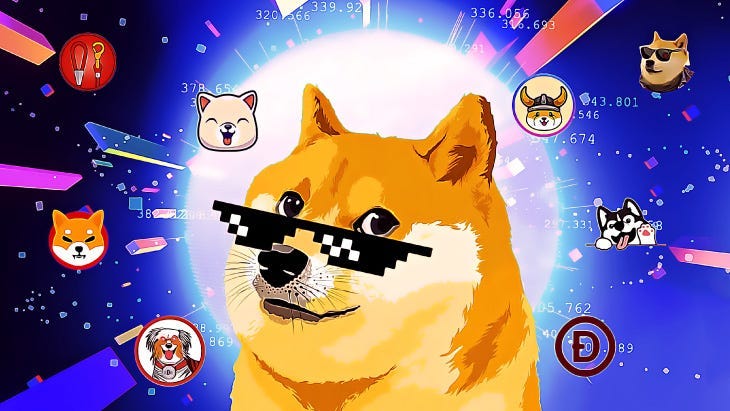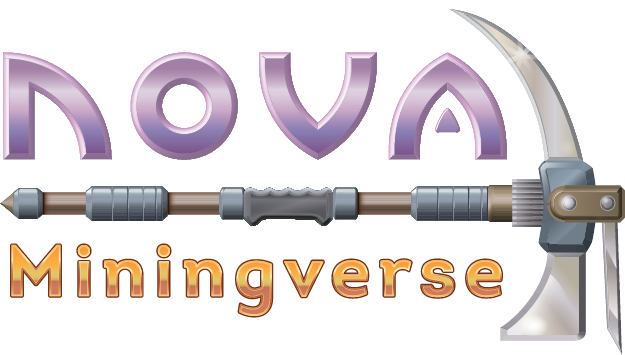
In the world of cryptocurrency, memecoins, also known as shitcoins, have gained significant attention in recent years. These coins are often marketed as fun and harmless investments, but in reality, they are nothing more than speculative assets with little to no real-world value.
Now with the return of memes to the top tier of Web3 narratives, we will explore their origin and why they are not worth investing in despite the rocketing returns (spoiler, no liquidity, no earnings)
The origin of memecoins can be traced back to the rise of Bitcoin and other popular cryptocurrencies. As more and more people began to invest in these digital assets, a new trend emerged: the creation of new coins with no real use case or purpose. These coins were often marketed as fun and quirky investments, with names and logos designed to appeal to younger, more tech-savvy investors.
One of the earliest and most well-known memecoins is Dogecoin, which was created in 2013 as a joke. The coin’s logo features the popular internet meme of a Shiba Inu dog, and its name is a play on the word “Bitcoin” and the popular internet meme of “DOGE.” Despite its lack of any real use case or utility, Dogecoin quickly gained a following and became one of the most popular cryptocurrencies on the market.
Since then, countless other memecoins have been created, each with its own unique name, logo, and marketing gimmick. From coins based on popular internet memes like PepeCoin and Rare Pepe, to coins named after famous people like TrumpCoin and PutinCoin, the world of shitcoins is hilarious, vast and varied.
However, while these coins may seem fun and harmless, they are not a wise investment. Unlike Bitcoin and other established cryptocurrencies, shitcoins have no real application to any case scenario. They are simply speculative assets that are only worth what people are willing to pay for them. As a result, memecoins are incredibly volatile and can lose value quickly. This makes them a risky investment, especially for inexperienced investors.
Furthermore, memecoins are often associated with pump-and-dump schemes, where groups of investors artificially inflate the value of a coin before selling off their holdings at a profit. This can leave unsuspecting investors holding worthless coins that have plummeted in value.
Let’s imagine you have 1.000.000 of Dogecoin, and the price reaches the dollar. You may believe you have a million dollars ready to be claimed. The reality is that the increase in the price of the token is artificial, and, if you would try to withdraw big amounts, you will find that there is not enough liquidity to get exchange your tokens.
In addition, memecoins are often created by anonymous developers, which means that there is no real accountability for the coin’s performance or reliability. This lack of transparency can make it difficult for investors to make informed decisions about whether or not to invest in a particular token.
Finally, they are often used as a vehicle for scams and fraud. Because they are easy to create and market, it is not uncommon for scammers to create their own memecoins and then promote them as the next big thing in cryptocurrency. This can lure unsuspecting investors into investing in a worthless asset that will never appreciate in value.
Now, let’s take a look at the chart of the most famous shitcoins at the moment (sorry $PEPE, you are not one of them):
- Dogecoin (DOGE) — Created in 2013 as a joke, Dogecoin is based on the popular internet meme of a Shiba Inu dog. Despite its lack of any real use case, Dogecoin quickly gained a following and became one of the most popular cryptocurrencies on the market. As of May 2023, the market cap of Dogecoin is around $30 billion.
- Shiba Inu (SHIB) — Inspired by Dogecoin, Shiba Inu was created in August 2020 as a fun and quirky investment. Its logo features a Shiba Inu dog, and its name is a nod to the original Dogecoin. As of May 2023, the market cap of Shiba Inu is around $3 billion.
- SafeMoon (SAFEMOON) — Created in March 2021, SafeMoon is a memecoin that claims to reward long-term holders through its automatic liquidity pool, reflection, and burning mechanisms. As of May 2023, the market cap of SafeMoon is around $1 billion.
- ElonGate (ELONGATE) — Launched in March 2021, ElonGate is a memecoin that claims to support charitable causes and environmental sustainability initiatives. Its name and logo are a tribute to Elon Musk, who has been a vocal supporter of cryptocurrencies. As of May 2023, the market cap of ElonGate is around $500 million.
¿But, how on hell have those coins reached such a market cap?
Elon Musk, the billionaire entrepreneur and CEO of Tesla and SpaceX, has been known to tweet about cryptocurrencies, including memecoins. Some of his tweets have caused a significant increase or decrease in the prices of certain tokens. Here is a compilation of some of his tweets that have spoiled the prices of memecoins:
- Dogecoin — On May 8, 2021, Elon Musk tweeted “Doge Barking at the Moon” with a picture of a rocket soaring towards the moon. This tweet caused a significant increase in the price of Dogecoin.
- SafeMoon — On April 20, 2021, Elon Musk tweeted “SafeMoon” with a rocket emoji. This tweet caused a significant increase in the price of SafeMoon.
- Baby Doge Coin (BABYDOGE) — On July 1, 2021, Elon Musk tweeted “Baby Doge, doo, doo, doo, doo, doo” with a reference to the popular children’s song “Baby Shark”. This tweet caused a significant increase in the price of Baby Doge Coin.
- Shiba Inu — On May 19, 2021, Elon Musk tweeted “Baby Doge, doo, doo, doo, doo, doo” with a reference to the popular children’s song “Baby Shark”. This tweet caused a significant increase in the price of Shiba Inu.
It is worth noting that while Elon Musk’s tweets can have an impact on the prices of some tokens, investors should not base their investment decisions solely on his tweets.
In conclusion, while memecoins may seem like a fun and harmless investment, they are nothing more than speculative assets with little to no real-world value. Investing in these tokens is a risky proposition that is likely to result in losses. As such, we do not advisable to support or invest in projects with no value proposal.
Instead, investors should focus on established cryptocurrencies with real-world use cases and utility. By doing so, they can minimize their risk and maximize their potential for long-term gains.
Keen to learn more?
Read the Nova Miningverse Whitepaper
Stay close: Telegram | Nova Miningverse Twitter | LinkedIn | Website | YouTube | Discord

